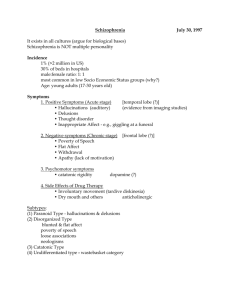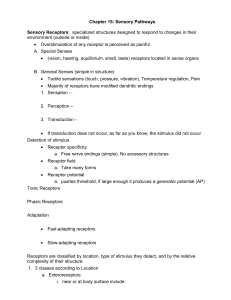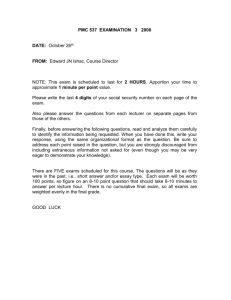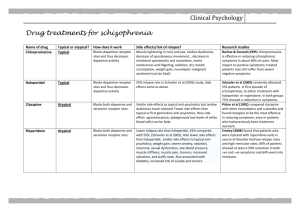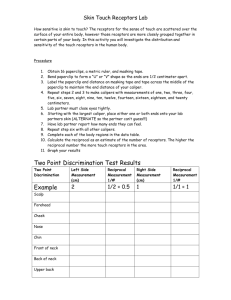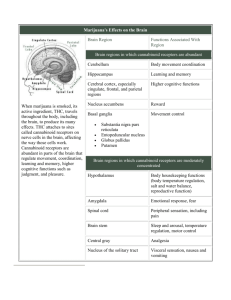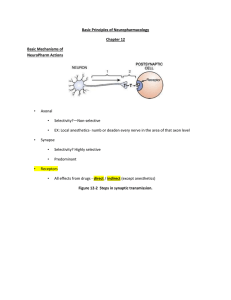Renal Physiology I Questions & Answers
advertisement
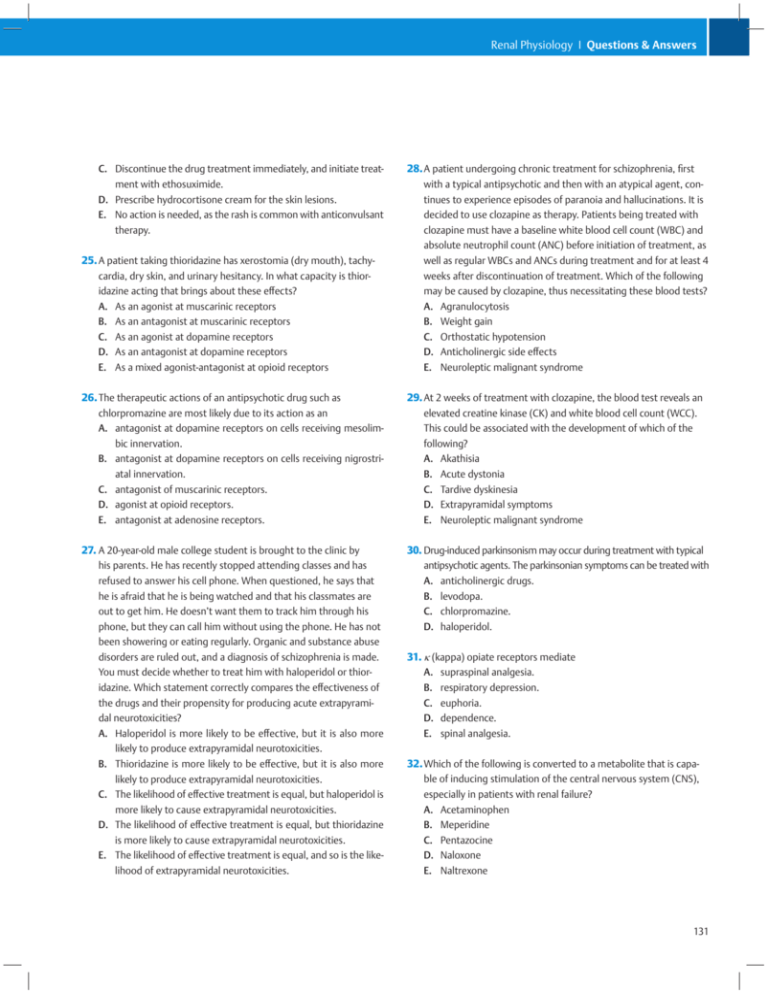
Renal Physiology I Questions & Answers C.Discontinue the drug treatment immediately, and initiate treat- 28.A patient undergoing chronic treatment for schizophrenia, first ment with ethosuximide. with a typical antipsychotic and then with an atypical agent, con- D. Prescribe hydrocortisone cream for the skin lesions. tinues to experience episodes of paranoia and hallucinations. It is E.No action is needed, as the rash is common with anticonvulsant decided to use clozapine as therapy. Patients being treated with therapy. clozapine must have a baseline white blood cell count (WBC) and absolute neutrophil count (ANC) before initiation of treatment, as 25.A patient taking thioridazine has xerostomia (dry mouth), tachy- well as regular WBCs and ANCs during treatment and for at least 4 cardia, dry skin, and urinary hesitancy. In what capacity is thior- weeks after discontinuation of treatment. Which of the following idazine acting that brings about these effects? A. As an agonist at muscarinic receptors may be caused by clozapine, thus necessitating these blood tests? A. Agranulocytosis B. As an antagonist at muscarinic receptors B. Weight gain C. As an agonist at dopamine receptors C. Orthostatic hypotension D. As an antagonist at dopamine receptors D. Anticholinergic side effects E. As a mixed agonist-antagonist at opioid receptors E. Neuroleptic malignant syndrome 26.The therapeutic actions of an antipsychotic drug such as 29.At 2 weeks of treatment with clozapine, the blood test reveals an chlorpromazine are most likely due to its action as an elevated creatine kinase (CK) and white blood cell count (WCC). A.antagonist at dopamine receptors on cells receiving mesolim- This could be associated with the development of which of the bic innervation. B.antagonist at dopamine receptors on cells receiving nigrostriatal innervation. following? A. Akathisia B. Acute dystonia C. antagonist of muscarinic receptors. C. Tardive dyskinesia D. agonist at opioid receptors. D. Extrapyramidal symptoms E. antagonist at adenosine receptors. E. Neuroleptic malignant syndrome 27.A 20-year-old male college student is brought to the clinic by 30.Drug-induced parkinsonism may occur during treatment with typical his parents. He has recently stopped attending classes and has antipsychotic agents. The parkinsonian symptoms can be treated with refused to answer his cell phone. When questioned, he says that A. anticholinergic drugs. he is afraid that he is being watched and that his classmates are B. levodopa. out to get him. He doesn’t want them to track him through his C. chlorpromazine. phone, but they can call him without using the phone. He has not D. haloperidol. been showering or eating regularly. Organic and substance abuse disorders are ruled out, and a diagnosis of schizophrenia is made. 31.k (kappa) opiate receptors mediate You must decide whether to treat him with haloperidol or thior- A. supraspinal analgesia. idazine. Which statement correctly compares the effectiveness of B. respiratory depression. the drugs and their propensity for producing acute extrapyrami- C. euphoria. dal neurotoxicities? D. dependence. A.Haloperidol is more likely to be effective, but it is also more E. spinal analgesia. likely to produce extrapyramidal neurotoxicities. B.Thioridazine is more likely to be effective, but it is also more 32.Which of the following is converted to a metabolite that is capable of inducing stimulation of the central nervous system (CNS), likely to produce extrapyramidal neurotoxicities. C.The likelihood of effective treatment is equal, but haloperidol is D.The likelihood of effective treatment is equal, but thioridazine E.The likelihood of effective treatment is equal, and so is the like- more likely to cause extrapyramidal neurotoxicities. is more likely to cause extrapyramidal neurotoxicities. lihood of extrapyramidal neurotoxicities. especially in patients with renal failure? A. Acetaminophen B. Meperidine C. Pentazocine D. Naloxone E. Naltrexone 131
